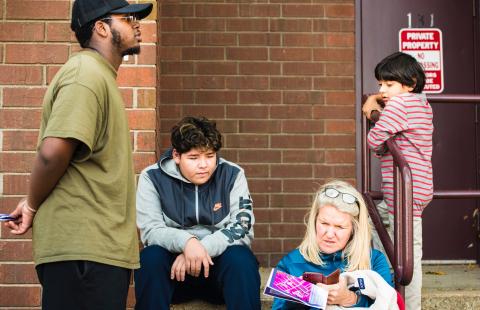What were the specific goals of this creative economy project? Describe the community development challenge or opportunity that your project was designed to address:
ZUMIX Radio keeps a good pulse on the topics of concern in East Boston. For the past year, the issue of displacement has been central in the radio studio's conversation. We continually heard a couple common points. First, gentrification is often discussed and covered in media as an inevitable, unsolvable national trend. And second, this type of narrative in a changing neighborhood results in feelings of insecurity and anxiety among tenants at risk of displacement. Through this project, we hope to open space for live events where neighbors can share and listen to stories that are more nuanced and personal than the singular 'gentrification narrative.' We want neighbors to be able to learn about the grassroots efforts responding to the issue of displacement, feel solidarity with others by sharing time and stories, and realize some of their power to participate in and influence city planning for the future of the neighborhood.
If the goals change over time, please describe how:
Throughout the project, we've been following the City of Boston's implementation of Plan East Boston -- the city planning process that will define the neighborhood's vision for the future of housing, open space, mobility and climate adaptation in the coming years. When the Boston Planning & Development Agency announced a call for nominations for an Advisory Group to advise the process, the Constelación de Historias events seemed like a good opportunity to connect more residents to city planning. Planners from the BPDA attended two of our events and were able to collect nominations and feedback from neighbors who didn't attend their official public hearings. We began to see an additional positive outcome in our creative events' potential to reach different residents with information that is critical to ensure a community-driven, participatory planning process.
Who was involved in this project and what did they do? (be sure to include the partners from outside of the creative sector and how local voices were included):
Constelación de Historias has two organizational partners: Stand for Democracy and the Center for Cooperative Development and Solidarity (CCDS).
Stand for Democracy is a group of volunteers that formed in 2013 to work alongside the faith community in East Boston in resistance to a proposed casino at Suffolk Downs. Today, they continue working with local congregations to determine the future of that same piece of land -- which was most recently on the shortlist for Amazon's second national headquarters -- asking for more transparency and a more democratic process in the redevelopment of the parcel. Stand for Democracy hosts a weekly radio show on ZUMIX Radio, and collaborated in the outreach and facilitation of live events for Constelación de Historias.
The Center for Cooperative Development and Solidarity is a grassroots community group that provides popular education training in the formation of worker-owned cooperatives. The group formed in 2015 in response to a wall collapse that displaced several families down the street from ZUMIX. Neighbors began meeting in the basement of the East Boston Lutheran Church to realize their economic power and find ways to remain in the neighborhood, despite rising rent prices and the poor conditions of the affordable housing stock. CCDS collaborated on Constelación de Historias, assisting in the facilitation of the live events. CCDS' digital video and design cooperative produced video documentation for three of the events to support outreach for the project.
ZUMIX Radio youth journalists used their audio production skills to record voiceovers, produce audio documentaries for our Sound Walk, and develop PSAs for community outreach. Youth also facilitated our Audio Challenge, a community workshop that taught community members to record their own personal audio stories about places of significance to them in the neighborhood.
How does this project relate to a larger community development strategy?
The City of Boston has initiated Plan East Boston in response to development that has largely grown outside of the neighborhood's current zoning ordinances. It is apparent that granting variances to so many large-scale developments has resulted in a new neighborhood fabric that doesn't represent residents' priorities around affordability, open space, and preservation. This project wishes to bring neighbors together in communal space, provide chances to realize shared solidarity and power to shape the future of the neighborhood, and bolster the city's outreach efforts through creative and fun practices. We think that future planning requires flexible, expansive thinking, a type of mind frame that comes when we are sharing stories and making art. We hope that Plan East Boston will outline a long-term strategy for neighborhood development that is reflective of residents' desires, because of our collective commitment to increase participation in the planning process.
What projects or places, if any, inspired your approach to this creative economy project?
In dreaming up plans for this project, we drew inspiration from the street journalism of the Listening Post Collective, a New Orleans-based project that solicited residents' opinions on a range of open questions posted on telephone poles around town. We are inspired by transformative media organizing practices that shift the framing of stories into the hands of people most affected by a community issue. In addition, we look to other community-based organizations like City Bureau in Chicago, which actively trains neighbors to produce journalism that offers a new perspective from the dominant narratives coming out of larger news outlets. City Bureau is a motivating example of journalism and data storytelling working to hold government accountable.
